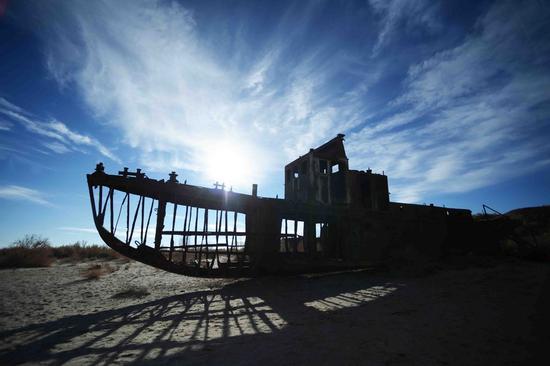Human activities impact Aral Sea Basin: research

Photo taken on Dec. 7, 2015 shows an abandoned ship at Moynak in the Aral Sea, Uzbekistan. (Xinhua/Sadat)
Chinese researchers have found that the impact of human activities on the Aral Sea is far greater than that of climate change.
The Aral Sea, located between Kazakhstan and Uzbekistan, was once the world's fourth-largest inland waterbody.
Its area saw a sharp contraction since the 1960s due to large-scale reclamation and construction of water conservancy projects, thereby seriously affecting the ecosystem of the waterbody.
The retreat of the Aral Sea has slowed down in recent years, while the underlying reasons are not reported, according to researchers from the Xinjiang Institute of Ecology and Geography under the Chinese Academy of Sciences.
They systematically analyzed the evolution of the Aral Sea from 1960 to 2018, detected the time for the slowdown of retreat and explored the driving forces.
The results showed that the Aral Sea retreated rapidly from 1960 to 2004. The annual shrinking rates of water surface area, water volume and water level were 1,087 square km, 25.07 cubic km and 0.56 meters, respectively.
However, the retreat has slowed since 2005, with the annual shrinking rates of 760 square km, 2.86 cubic km and 0.38 meters, respectively.
Meanwhile, the area of water bodies surrounding the sea witnessed a significant increase due to the agricultural drainage water.
The increased upstream runoff due to rapid melting of glaciers and a mild increase in precipitation, the reduced water withdrawal since 2005, and the rise of water delivery to the sea have slowed down the shrinkage of the sea.
The findings provided a scientific reference for the management and protection of the Aral Sea, said the research article published in the journal Atmospheric Research.
